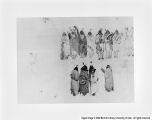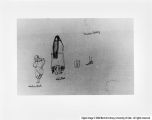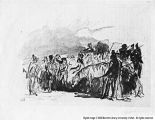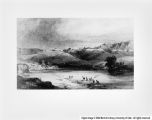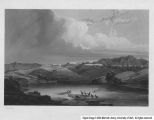| OCR Text |
Show fully the astounding value of Bodmer's American prints. For the next one hundred years the aquatints Bodmer produced remained the major source of ethnological information concerning the early nineteenth-century Plains Indian. After publication of Travels, the original watercolors and sketches were returned to Maximilian and forgotten. In 1953 Bodmer's original portfolio, rediscovered a few years previously at the Neuwied estate outside Coblenz in northern Germany, was made available for the first time. The Smithsonian Institution arranged to exhibit a selection of these works at various museums across the country. In 1962 the entire Maximilian collection, which included Bodmer's watercolors and sketches, was placed on permanent loan at the Joslyn Art Museum in Omaha, Nebraska. Since that time, the contents of the original portfolio, produced on the expedition, have been widely publicized, culminating in a major traveling exhibition of the works in 1984 and publication of Karl Bodmer's America the same year, in which Bodmer's entire portfolio was spectacularly reproduced for the first time. Understandably, attention of historians and ethnologists shifted from the aquatints in Travels to the primary documents of the expedition. As a result, the traditional roles played by the watercolors and the aquatints are in the process of being reversed. The aquatints are now receding into the background, relegated to the role of secondary documentation as the watercolors assume the pre-eminent position in serious historical and ethnological studies. The implications for this reversal have not yet been fully realized. The aquatints are still copiously used as illustration for |
















































